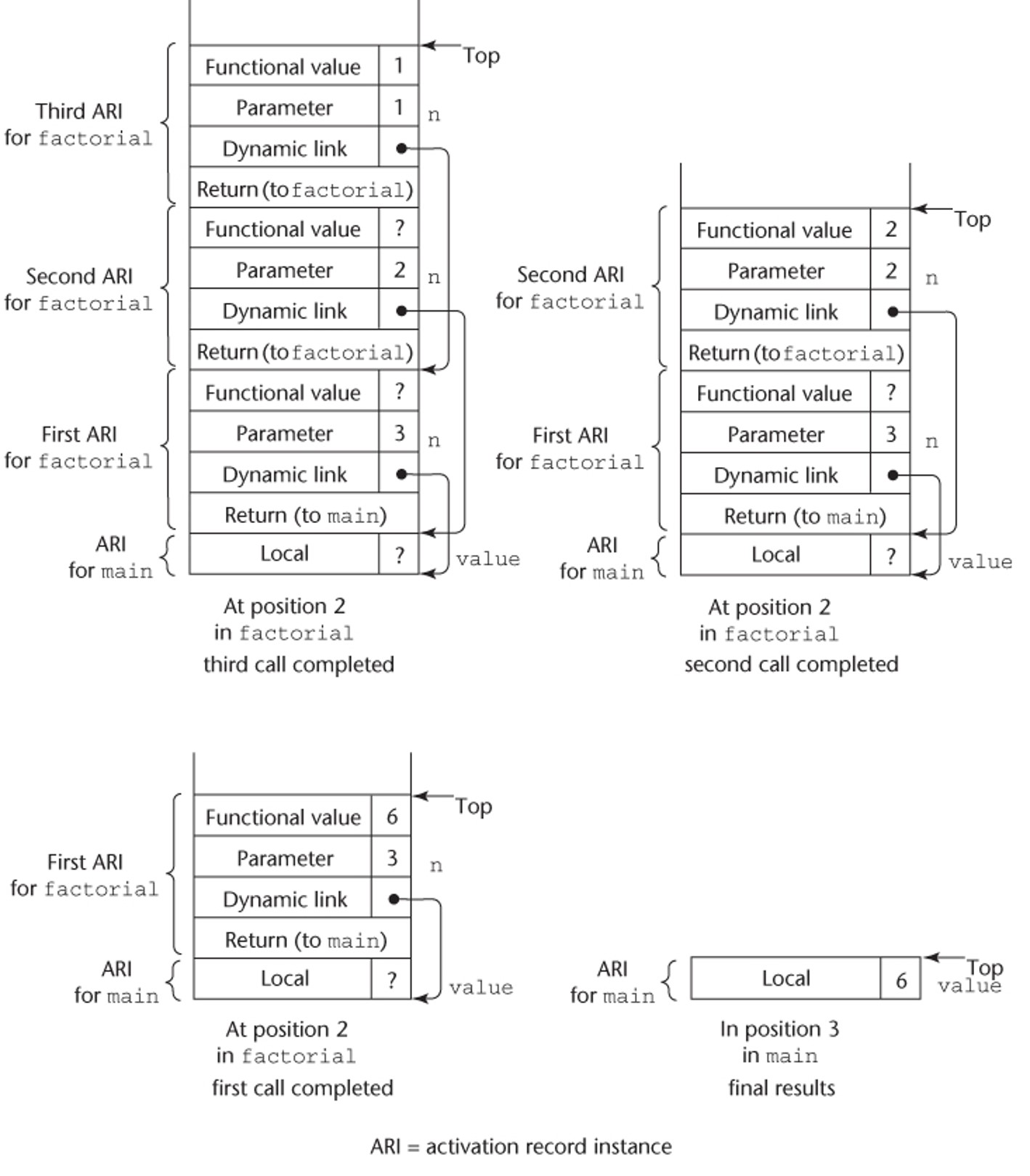14 - Subprogram Implementation#
The General Semantics of Calls and Returns#
The subprogram call and return operations of a language are together called its subprogram linkage.
General semantics of calls to a subprogram:
Parameter passing methods
Stack-dynamic allocation of local variables
Save the execution status of calling program
Transfer of control and arrange for the return
If subprogram nesting is supported, access to nonlocal variables must be arranged
General semantics of subprogram returns:
Out mode and inout mode parameters must have their values returned
Deallocation of stack-dynamic locals
Restore the execution status
Return control to the caller
Implementing “Simple” Subprograms#
Subprograms cannot be nested and all local variables are static.
Call semantics:
Save the execution status of the caller
Compute and pass the parameters
Pass the return address to be called
Transfer control to the called
Return semantics:
If pass-by-value-result or pass-by-result parameters are used, move the current values of those parameters to their corresponding actual parameters
If it is a function, move the functional value to a place the caller can get it
Restore the execution status of the caller
Transfer control back to the caller
Required storage:
Status information
Parameters
Return address
Return value for functions
Temporaries
Subprograms are implemented with 2 separate parts: the actual code and the non-code part (local variables and data that can change).
The format, or layout, of the non-code part of an executing subprogram is called an activation record.
An activation record instance is a concrete example of an activation record (the collection of data for a particular subprogram activation).
An Activation Record for “Simple” Subprograms#

Code and Activation Records of a Program with “Simple” Subprograms#

Implementing Subprograms with Stack-Dynamic Local Variables#
Using stack-dynamic local variables to implement subprograms involves a much more complex activation record.
The compiler must generate code to cause implicit allocation and deallocation of local variables
Recursion must be supported (adds the possibility of multiple simultaneous activations of a subprogram)
Activation Record#
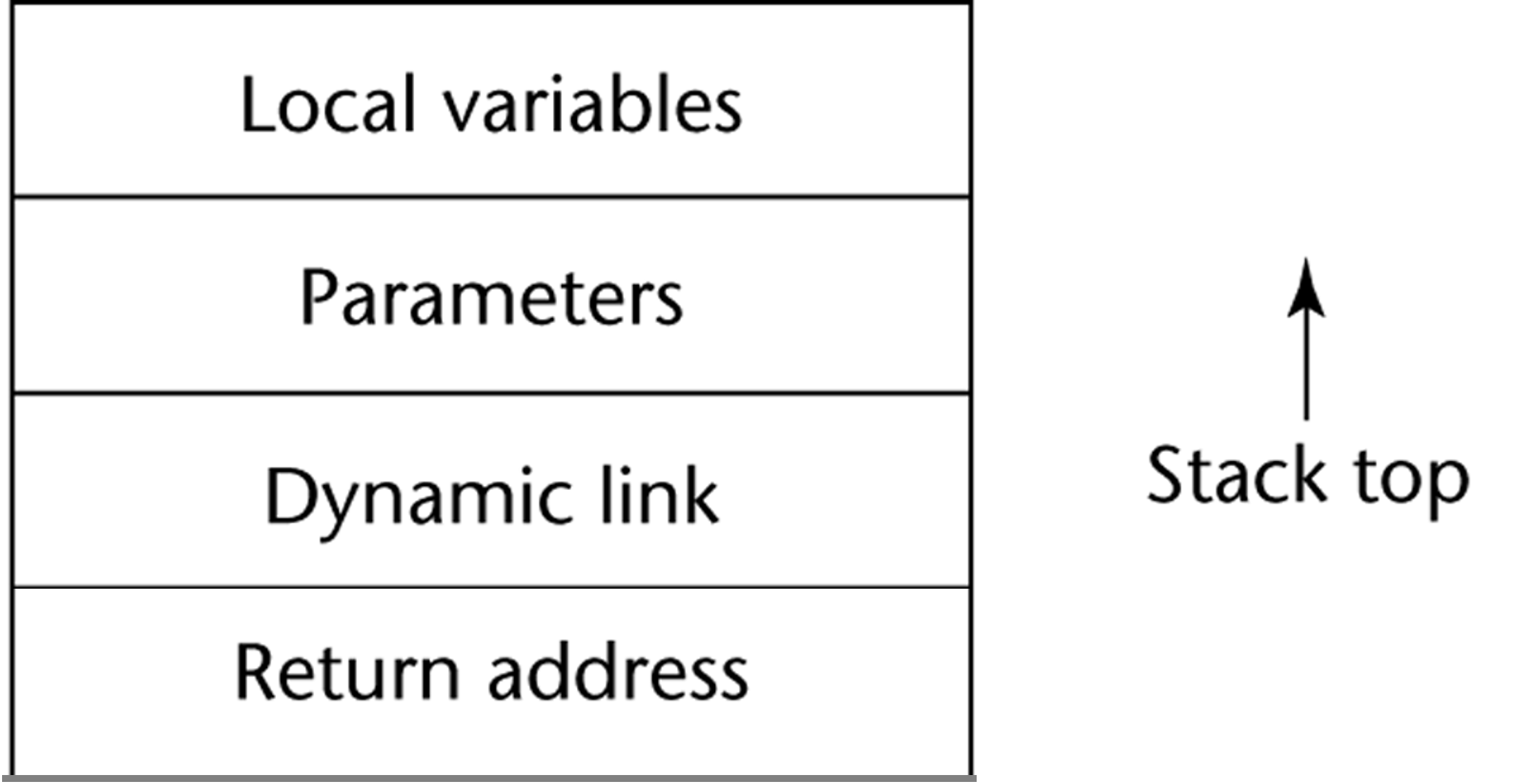
The activation record format is static, but its size may be dynamic.
The dynamic link points to the base of the activation record instance of the caller.
An activation record instance is dynamically created when a subprogram is called.
Activation record instances reside on the run-time stack.
The Environment Pointer (EP) must be maintained by the run-time system. It always points to the base of the activation record instance of the currently executing program unit.
An example C Function:
void sub(float total, int part) {
int list[5];
float sum;
...
}
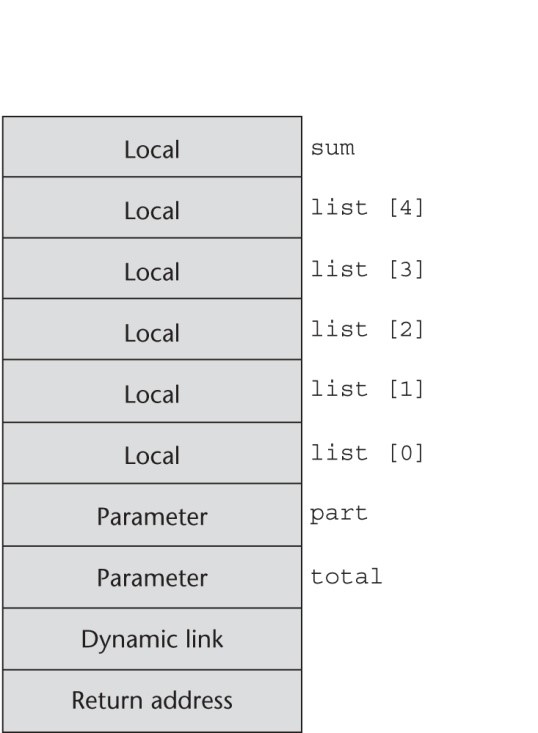
Revised Semantic Call/Return Actions#
Caller actions:
Create an activation record instance
Save the execution status of the current program unit
Compute and pass the parameters
Pass the return address to the called
Transfer control to the called
Prologue actions of the called:
Save the old EP in the stack as the dynamic link and create the new value
Allocate local variables
Epilogue actions of the called:
If there are pass-by-value-result or out-mode parameters, the current values of those parameters are moved to the corresponding actual parameters
If the subprogram is a function, its value is moved to a place accessible to the caller
Restore the stack pointer by setting it to the value of the current EP-1 and set the EP to the old dynamic link
Restore the execution status of the caller
Transfer control back to the caller
An Example without Recursion#
void fun1(float r) {
int s, t;
...
fun2(s);
...
}
void fun2(int x) {
int y;
...
fun3(y);
...
}
void fun3(int q) {
...
}
void main() {
float p;
...
fun1(p);
...
}
main -> fun1 -> fun2 -> fun3
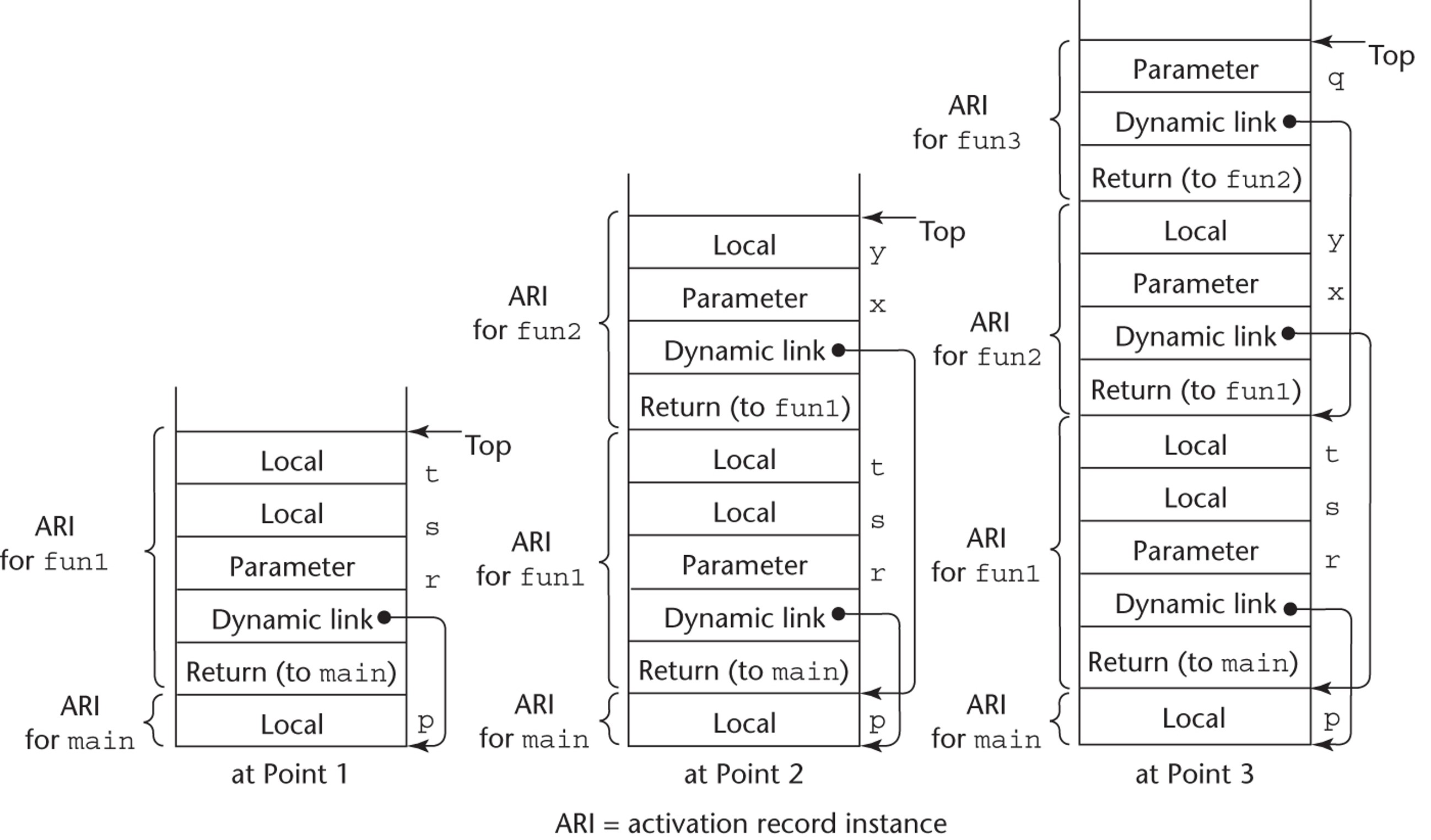
Dynamic Chain and Local Offset#
The collection of dynamic links in the stack at a given time is called the dynamic chain, or call chain.
Local variables can be accessed by their offset from the beginning of the activation record, whose address is in the EP. The offset is called the local_offset. The local_offset of a local variable can be determined by the compiler at compile time.
An Example with Recursion#
int factorial(int n) {
if (n <= 1) return 1;
else return (n * factorial(n - 1));
}
void main() {
int value;
value = factorial(3);
}
Activation record:
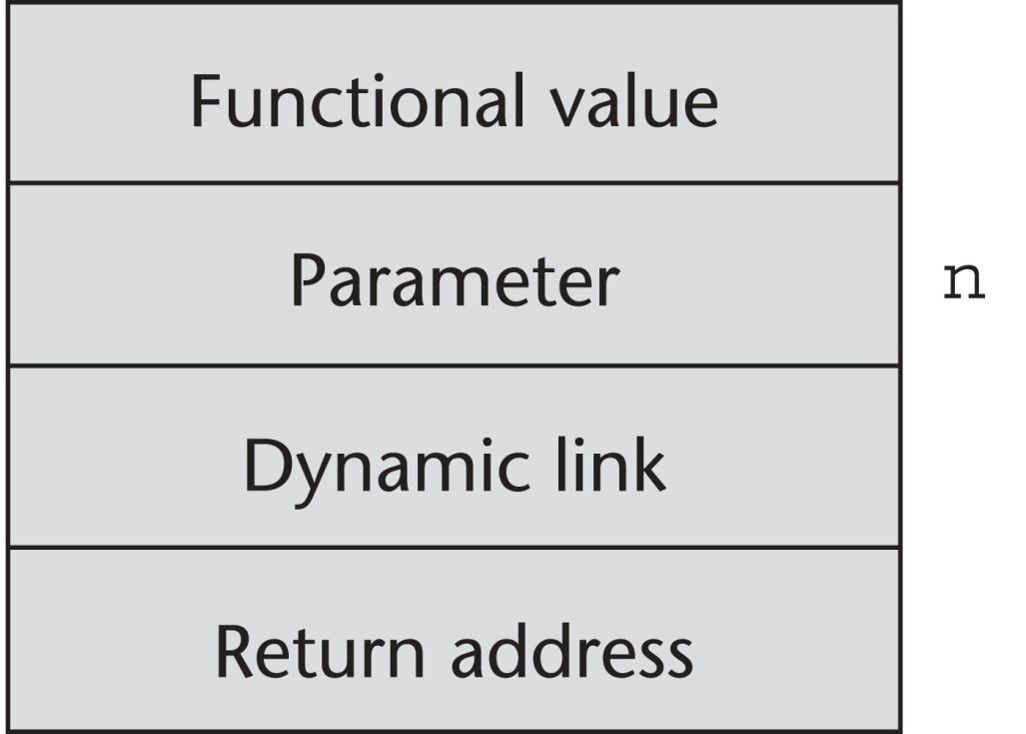
Stacks for calls to factorial:
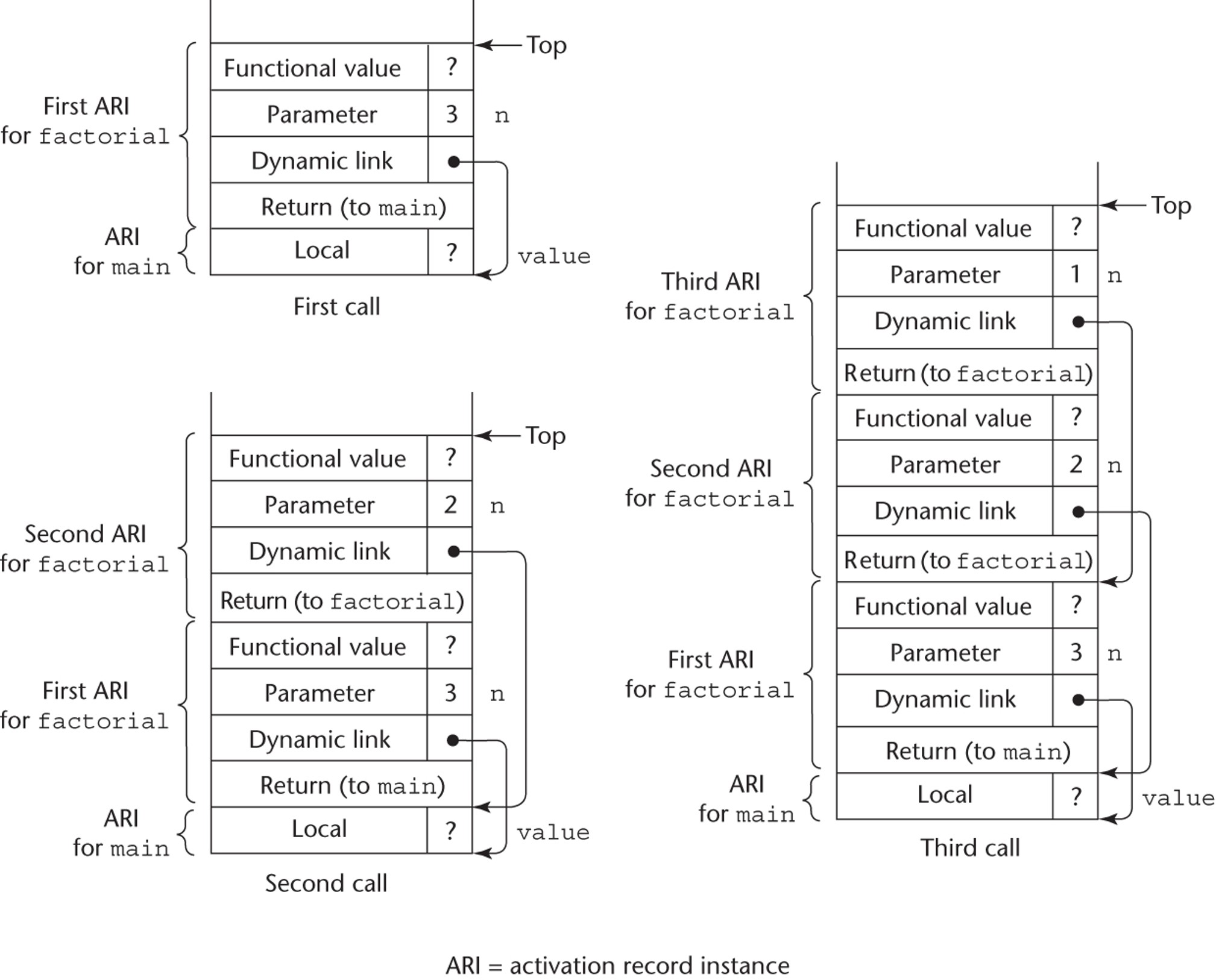
Stacks for returns to factorial:
